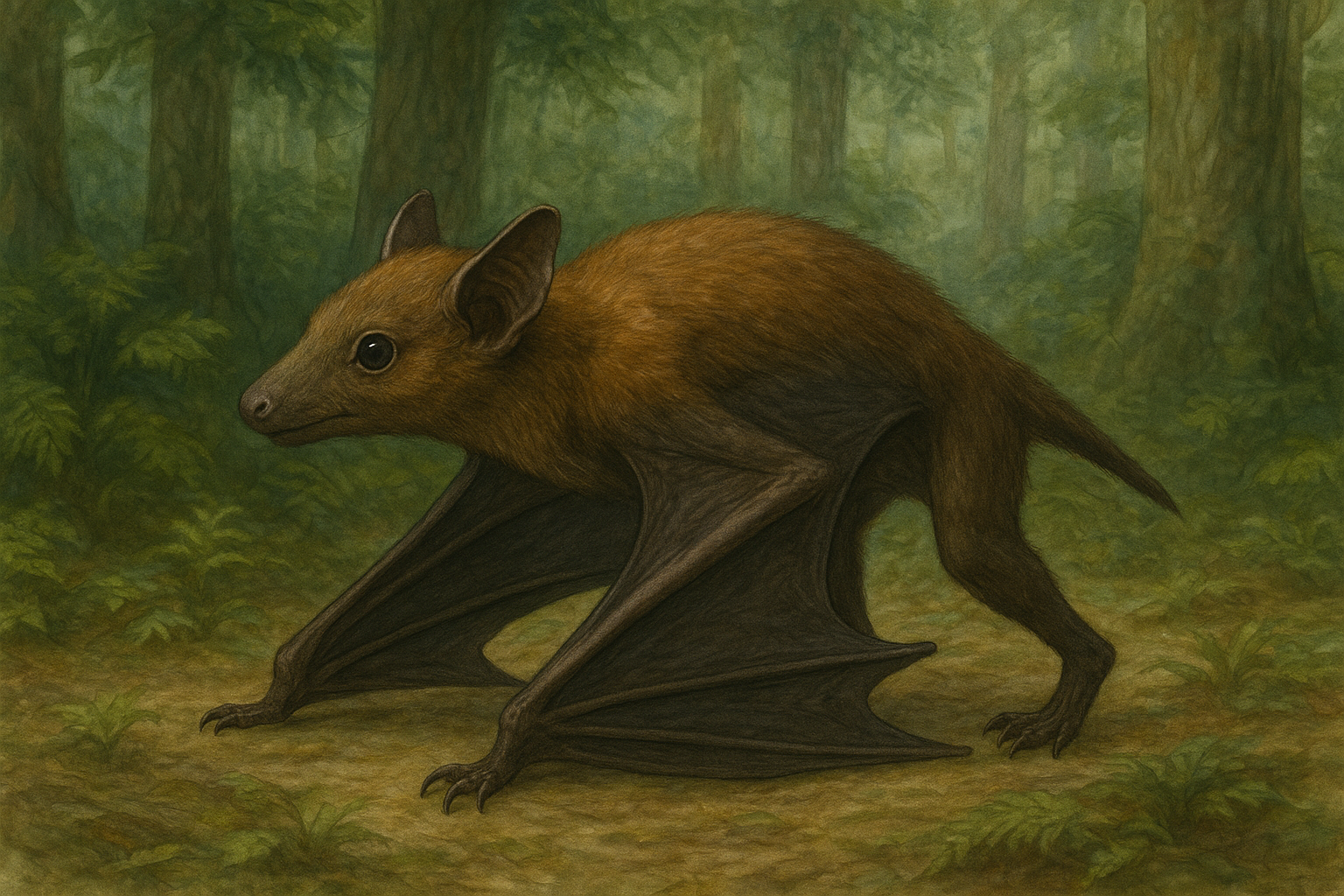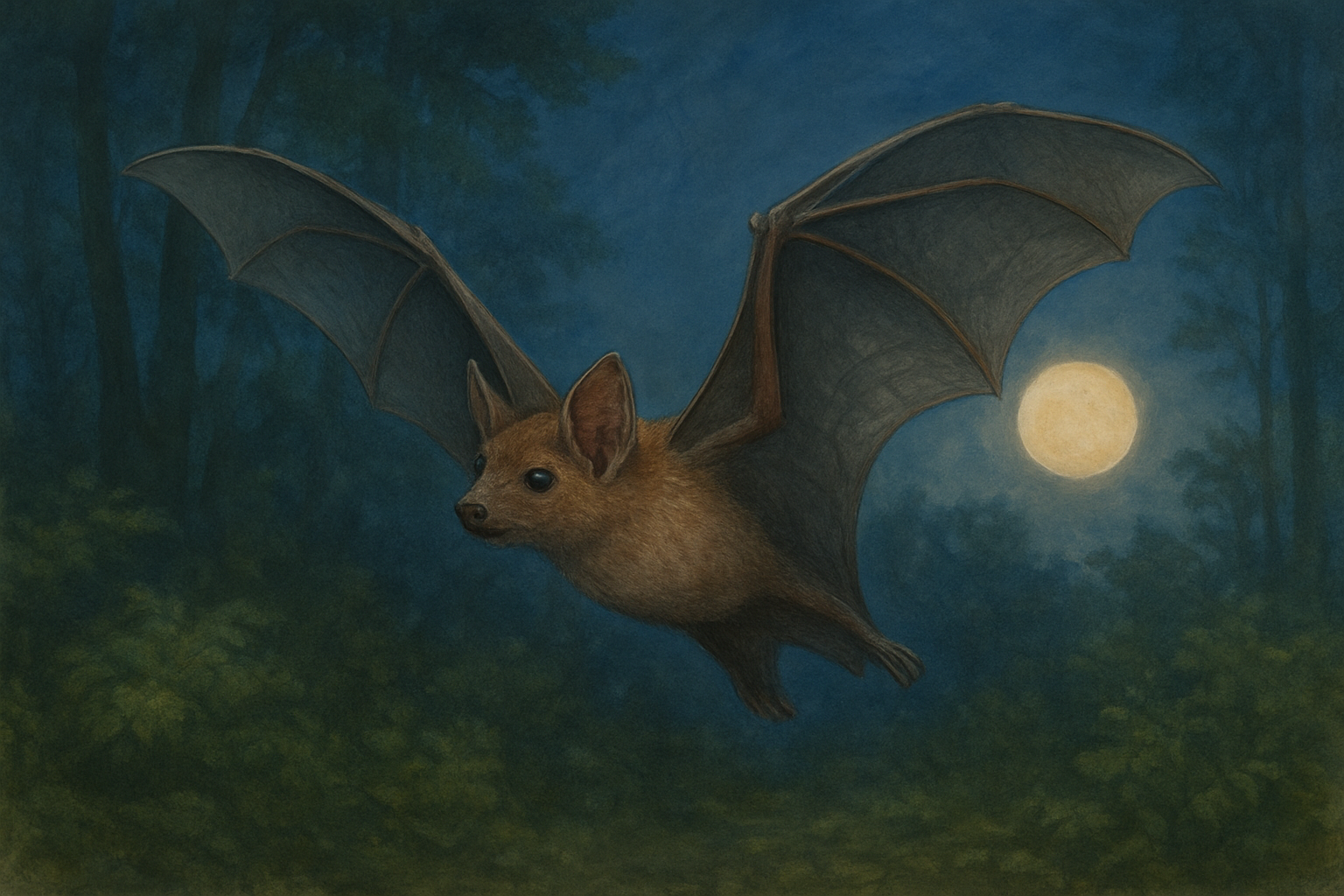Sometimes two very different species end up evolving similar traits even though they are not closely related. This process is called convergent evolution.
A good example is pterosaurs and bats. Both developed wings and the ability to fly, but their wings are built in different ways. Pterosaurs used an extended fourth finger to support their wing membrane, while bats use all of their elongated fingers.
Even though they come from separate branches of the evolutionary tree, the pressures of flight pushed them toward similar solutions.
While dinosaurs ruled the land, the distant ancestors of bats were already taking shape, waiting for their chance to fill the skies Although bats themselves evolved tens of millions of years after non-avian dinosaurs disappeared, their early mammalian ancestors lived in the shadow of the dinosaurs, gradually developing traits that would later make flight possible
Bats & their ancient ancestors
While dinosaurs ruled the land, pterosaurs were already taking to the skies, becoming the first vertebrates capable of powered flight. These flying reptiles evolved long, membranous wings supported by an elongated fourth finger, allowing them to glide, soar, and hunt with remarkable agility. Early pterosaurs, like Rhamphorhynchus and Pterodactylus, displayed a variety of sizes and shapes, adapting to different environments and food sources. Over millions of years, pterosaurs became highly specialized flyers, dominating the skies long before birds or bats appeared.
Pterosaurs: Masters of the Sky
Early pterosaurs, such as Rhamphorhynchus and Pterodactylus, had elongated wing fingers, lightweight hollow bones, and tails or head crests that show the gradual evolution of flight in these reptiles. This highlights the journey from small, gliding ancestors to highly agile flyers capable of hunting, soaring, and thriving in a wide range of environments.
Rhamphorhynchus is an extinct genus of early pterosaur that lived during the Late Jurassic period, roughly 150 million years ago. This small to medium-sized reptile is particularly important for understanding the transition from gliding ancestors to true powered flight. Unlike later pterosaurs, Rhamphorhynchus had a long, stiff tail with a diamond-shaped vane for stability and teeth adapted for catching fish, suggesting it relied on precision and maneuverability while hunting over water.
These pterosaurs thrived in coastal and lagoon environments, rich ecosystems supporting diverse marine and terrestrial life. Flight allowed them to exploit ecological niches that were unavailable to land-bound reptiles, from fish hunting to scavenging. Studying Rhamphorhynchus provides insight into the broader evolutionary story of pterosaurs, showing how they diversified into numerous forms that dominated the skies long before birds evolved.
The existence of Rhamphorhynchus highlights the complexity of Jurassic ecosystems and the evolution of vertebrate flight in response to environmental challenges. Exploring these animals enhances our understanding of Earth's natural history, showing how pterosaurs became specialized and successful aerial predators. They serve as a fascinating example of evolutionary innovation during the age of dinosaurs, bridging the gap between ground-dwelling reptiles and the masters of the Mesozoic skies.
Powered flight in pterosaurs gave them access to diverse food sources, from fish in coastal waters to small terrestrial prey, and allowed them to dominate the skies for millions of years. Their wings, formed from a membrane of skin and muscle stretched across an elongated fourth finger, provided precise maneuverability and efficient gliding, showing how evolution produced one of the earliest and most successful vertebrate flyers.
This is a depiction of what we think Rhamphorhynchus looked like based on its fossil records.
This is a depiction of what we think Quetzalcoatlus northropi looked like based on its fossil records.
This was the largest pterosaur we know of.
Bats are the only mammals capable of sustained and controlled flight, a remarkable evolutionary adaptation that traces back to their ancient ancestors living over 50 million years ago. Early bats, such as the primitive Onychonycteris, displayed distinct features like claws on their wings and a relatively simple ear structure, which suggests a gradual evolution of flight and echolocation. This highlights the journey from ground-dwelling, tree-climbing creatures to the highly agile and efficient flyers we see in the modern world today.
Onychonycteris is an extinct genus of early bat that lived during the Eocene epoch, roughly 52.5 million years ago, a period well after the reign of non-avian dinosaurs but still during a time of significant mammalian diversification following the mass extinction at the end of the Cretaceous period. This small, prehistoric creature is particularly important for understanding the evolutionary transition from non-flying mammals to true powered flight. Unlike modern bats, Onychonycteris had claws on all five fingers and a relatively simple ear structure, suggesting it may have relied more on sight than echolocation during its nocturnal activities.
Onychonycteris lived during a time when early mammals were beginning to exploit new ecological niches in forests that were, in many ways, the evolutionary successors of dinosaur-dominated landscapes. These Eocene forests were rich and diverse, supporting the early ancestors of many modern animals, including primates, which are directly linked to ancient human lineages. Studying Onychonycteris helps bridge our understanding of mammalian evolution after the age of dinosaurs and sets the stage for the emergence of primates and ultimately humans.
The existence of Onychonycteris highlights the complexity of ancient ecosystems, showing that by the time early human ancestors were evolving, significant advancements in mammalian flight and sensory adaptations had already occurred. Exploring these animals enhances our understanding of the broader narrative of Earth's natural history, illustrating how life continued to flourish and diversify long after the dinosaurs' extinction. In this way, Onychonycteris serves as a fascinating example of evolutionary innovation during a transitional era that connects the ancient past dominated by dinosaurs to the world inhabited by early humans.
Bats are the only mammals capable of sustained powered flight. Their wings evolved from elongated finger bones covered by a thin membrane of skin, allowing precise maneuverability and energy-efficient flight. This adaptation likely developed as bats transitioned from tree-dwelling gliders or ground-dwelling mammals to active fliers, aiding in nocturnal hunting and navigation. Powered flight in bats provides access to diverse food sources, such as insects and fruit, and enables echolocation, a sophisticated biological sonar system critical for survival in low-light environments.
This is a depiction of what we think Onychonycteris looked like based on its fossil records.
This is a simple depiction of what a modern day bat looks like mid flight..



